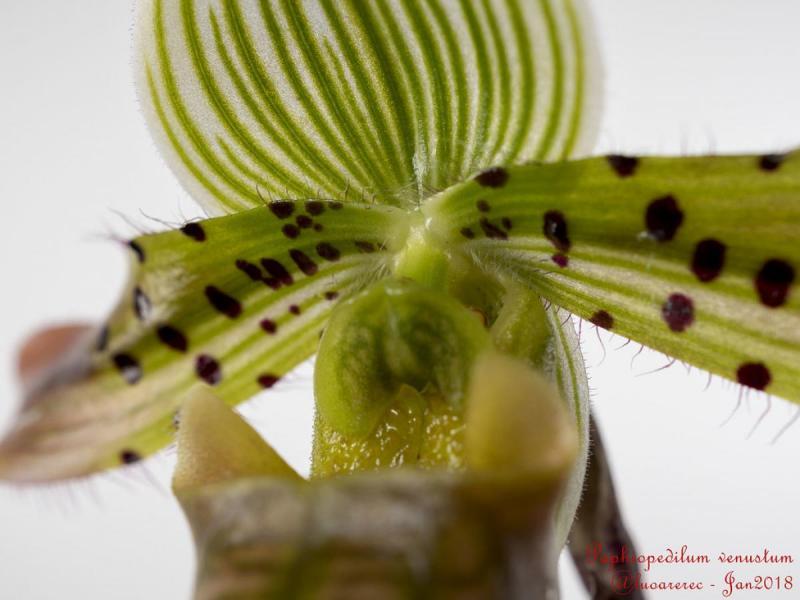Paphiopedilum venustum
Also known as: The Charming Paphiopedilum or Paphiopedilum venustum f. pardinum Paphiopedilum venustum h.f. alba Paphiopedilum venustum h.v. pardidum Paphiopedilum venustum h.f. aureum Paphiopedilum venustum h.f. aquinii Paphiopedilum venustum h.f. album-measuresianum Cypripedium pardinum Paphiopedilum pardinum Paphiopedilum venustum h.v. pynurslanum Cypripedium venustum var. spectabile Paphiopedilum venustum h.v. bruneoviridis Paphiopedilum venustum f. measuresianum Cypripedium venustum var. measuresianum Paphiopedilum venustum h.v. atratum Paphiopedilum venustum h.v. measuresianum Paphiopedilum venustum h.f. album Paphiopedilum venustum var. pardinum Paphiopedilum venustum var. teestaensis Cordula venusta Paphiopedilum venustum var. bhutanensis Paphiopedilum venustum var. rubrum in the subfamily: Cypripedioideae
Native to: Assam - India Bhutan
General Information
The Charming Paphiopedilum is a cool to warm growing orchid belonging to the sub family Cypripedioideae native to India and Bhutan.
Plant Description
Grows to 45cm. Each new growth has numerous leaves that grow to 4-22cm long
Flowers
Numerous blossoms appear during Winter and Spring
Blooming Season
- Spring
- Winter
Substrate(s)
- Coarse
Climate
Grows at low to high elevations. Rainfall ranges from 8mm to 798mm per day, heaviest in July and lightest in December. Humidity ranges from 73% to 95%, highest in July and lowest in March. Temperature ranges from 8C to 25C, highest in July (21C to 25C) and lowest in January (8C to 14C).
Watering
These orchids prefer a constant supply of moisture, with a slight drying out between waterings. Saucers can be placed under pots to retain moisture during hot weather, however the saucers should be removed or let to dry every 1-2 weeks to prevent rot. Keep an eye on the plant especially in hot weather and look for cues of under/overwatering and adjust accordingly.
Fertiliser
These orchids do not need to be regularly fertilised and roots may be sensitive to salt build-up, dying back and therefore impairing the plants growth or even killing it.
If fertilising, use half to quarter of the recommended amount of fertiliser. If they receive fertiliser as part of a collection, be sure to flush out the pots regularly with fresh water and monitor the roots by checking how much resistance is given by the plant when nudged in its pot or mount. If the plant becomes wobbly or loose, repot in fresh mix or rinse the media/mount thoroughly and do not fertilise for at least 3 months.
Be sure to flush out excess fertiliser by running water through the media regularly year round. Use a high Nitrogen fertiliser year round. Use a high Phosphorous fertiliser during Summer and Winter.Potting
Repotting is best done annually.





















